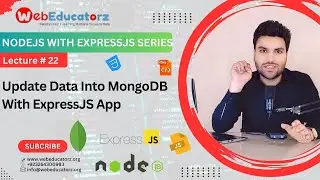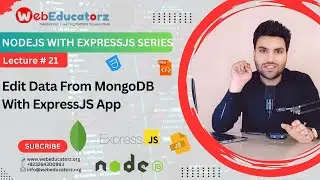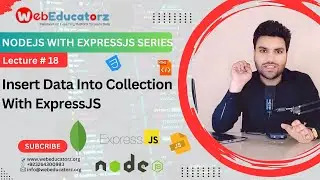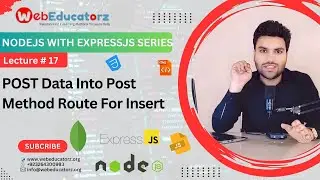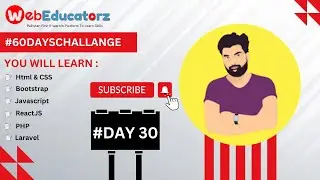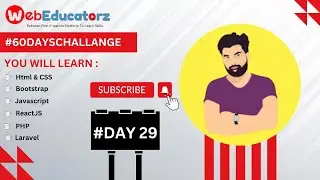🔴 #14 Delete Data From Collection In MongoDB - NodeJS With ExpressJS In Hindi - Asad Mukhtar
Welcome to the 14th lecture of the "Node.js with Express for Beginners" series on my channel, Asad Mukhtar! Today, we dive into a crucial aspect of database management: deleting data from a MongoDB collection. This lecture is designed to provide you with a clear understanding of how to safely and effectively remove documents from your MongoDB database using Node.js and Express.
In our previous lectures, we've covered the fundamentals of setting up a Node.js server, connecting to MongoDB, and performing basic CRUD operations (Create, Read, Update, and Delete). Now, it's time to focus on the "Delete" operation, which is essential for maintaining a clean and efficient database.
Understanding MongoDB Deletion
Before we jump into the code, it's important to understand the different methods available for deleting documents in MongoDB. We’ll explore two primary methods: deleteOne() and deleteMany().
deleteOne(): This method removes the first document that matches the specified filter. If you want to delete a single entry, this is the method to use.
deleteMany(): As the name suggests, this method removes all documents that match the given filter. This is useful when you need to clear out multiple records at once.
During this lecture, we will walk through practical examples of both methods, demonstrating how to implement them in your Node.js application.
Setting Up the Project
To get started, ensure you have your Node.js environment set up with Express and connected to your MongoDB instance. We will be using the Mongoose library to interact with MongoDB, which simplifies database operations and provides a schema-based solution.
In this lecture, I’ll guide you through creating a simple RESTful API endpoint for deleting records. We’ll set up a route that listens for DELETE requests and uses the appropriate Mongoose methods to remove data from our collection.
Building the Delete Endpoint
We’ll start by defining the route in our Express application. I'll show you how to use the app.delete() method to create an endpoint that clients can use to request the deletion of a specific resource. We’ll also handle any potential errors that might arise, ensuring that our application can gracefully manage issues like trying to delete a non-existent document.
Testing the Deletion Functionality
After implementing the delete functionality, we will use Postman (or any API testing tool) to test our endpoint. You'll see how to structure your DELETE request, and I’ll explain how to verify that the data has been successfully removed from the database.
Best Practices
Throughout the lecture, I'll emphasize best practices for deleting data in a production environment. We'll discuss the importance of validating user permissions, confirming delete actions (like using a confirmation dialog in front-end applications), and implementing soft deletes if necessary. Soft deletes allow us to mark records as deleted without permanently removing them, which can be helpful for auditing and recovery purposes.
Conclusion
By the end of this lecture, you will have a solid understanding of how to delete data from a MongoDB collection using Node.js and Express. This knowledge is vital for any web application that requires data management. I encourage you to practice what you've learned today by creating your own delete endpoints and testing them against your collections.
Don’t forget to like, subscribe, and hit the notification bell to stay updated on future lectures in this series. If you have any questions or need clarification, feel free to leave a comment below. Let’s get started on mastering data deletion in MongoDB together!
Thank you for joining me in this lecture, and I look forward to seeing you in the next session!
Welcome to Asad Mukhtar’s Official YouTube Channel (@asadmukhtarr)!
I’m a professional full-stack web and mobile app developer, CEO of WebEdcatorz (Pakistan’s first e-learning platform) and WebInventorz (a software company with multiple products in the market). On this channel, I share tutorials on web and mobile app development, from beginner to advanced levels, covering technologies like HTML, CSS, Laravel, React, and more.
Check out some of my popular courses:
HTML & CSS Crash Course: https://shorturl.at/alJ6u
Bootstrap 4 Course In Hindi/Urdu : bit.ly/4eQN0Xl
ReactJS Course In Hindi /Urdu : https://bit.ly/3Bv3i9S
VueJS Crash Course Hindi/Urdu : https://bit.ly/3Bv3i9S
Fiverr Crash Course In Hindi/Urdu : https://bit.ly/480oe4F
Laravel Crash Course In Hindi/Urdu: https://bit.ly/3Yg3wLc
PHP And Laravel Live Classes Recordings: https://bit.ly/3Nhd42c
Laravel with React: https://bitly.cx/zCr2I
Follow me on:
Facebook: facebook.com/asad.mukhtarr0
Instagram: instagram.com/asad.mukhtarr
TikTok: tiktok.com/@asadmukhtarr
LinkedIn: linkedin.com/in/muhammadasad0
Subscribe for more tutorials and tips!









